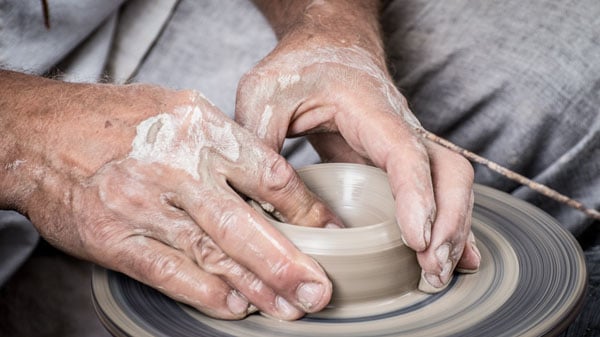
How do you Master Mindfulness?
Have you been asking: how do you master mindfulness? There are many benefits to becoming more mindful. We look at how you can train your mind to focus on the here and now, rather than let your thoughts drift into stresses of the past or future.
What is Mindfulness?
Although practices like meditation and journaling can certainly help, they are only part of what it means to be mindful.
Mindfulness is the deliberate cultivation of a state of heightened awareness and undivided attention to the events and sensations of the here and now, free of judgment or analysis.
By not letting your thoughts and emotions derail you from the task at hand, mindfulness allows you to fully appreciate the good moments as they occur and boosts your cognitive abilities.
If you can reduce your susceptibility to distractions, you’ll be able to better manage your time, reducing your stress levels because you won’t have to rush to do everything at the last minute.
How To Be Mindful
For a mindful practice, you can utilize anything that draws your attention. What you’re doing now can serve as a trigger, or you can use music, a physical sensation, an image, or anything else. The best time to start mindfulness training is right now, and the best way to get started is up to you.
Mindfulness practice is a neuroplasticity training. Most of us can’t seem to escape the world of instantaneous information and communication made possible by smartphones.
Constant stimulation and diversions condition our brains to anticipate flashing images we might not be interested in.
Even though it may be tempting, we gain nothing from checking social media sites while we should be eating. However, this spoils our experience of the food, the atmosphere, and the people with whom we’re sharing it.
Remember that practicing mindfulness is not a race or a quest for perfection. Ignore any guilt you may feel if you find yourself distracted. Simply recognize the distraction and bring your attention to your original mindfulness goal.
Ways to Master Mindfulness
Being in “the moment” and completely at peace with it is the essence of “mindfulness.” You have presence awareness, environmental awareness, and the capacity to respond without reacting.
Although it comes naturally to us, being mindful is a learned skill. Instead of checking your phone while waiting in line at the supermarket, try taking a few deep breaths and focusing on your immediate surroundings and the sensations they evoke.
Enhance your wellbeing with the steps below to achieve mindfulness.
Steps to Mindfulness
The past is not where we belong. Our eternal abode is not in the future. This very moment is where our hearts and minds should be. Our home is in the present moment, for that is where life is to be found.
Happiness is a byproduct of the energy we put into noticing and appreciating the sources of joy already here. Happiness like this can be yours right now, without having to wait a decade. It permeates every part of your day.
Some of us are still here and have no idea about it. But when you take a deep breath and pay attention to it, you experience a miracle: you are alive. That’s why finding time to practice mindfulness can bring so much joy.
Mindful breathing
Although the first exercise is quite easy, the potential power and the outcome can be substantial.
This practice consists of merely recognizing each inhales and exhale for what they are. When you take a deep breath, you recognize it as an inhalation. Knowing that you are exhaling helps you focus on the process.
Simply acknowledge that as you inhale, you also exhale. Extremely straightforward and uncomplicated.
You have to bring your attention back to yourself before you can properly identify your in-breath as such.
Your mind is what you’re doing when you notice your in-breath, and your in-breath is what you’re noticing and practicing awareness of.
Having a mindful attitude requires constant awareness. Mindful tea consumption is referred to as “mindfulness of drinking.”
Mindful walking is doing so with an awareness of the present moment. Mindfulness of breathing occurs when you pay attention to each inhale and exhale.
Train your mind to be present and focused
The second exercise involves paying close attention to each inhale and exhale for a meditation session.
What’s crucial is that you pay attention to your inhalation from start to finish. Your level of consciousness remains stable. No breaks are occurring.
Let’s say you’re inhaling deeply when a thought comes to mind that pulls your attention away.
Just remember to keep taking deep breaths in. The next step is to train your mind to be present and focused. As you focus on your breathing, you transform into your inhale and exhale.
If you keep going like that, you’ll notice that your breathing has become deeper and slower, more in sync with your body and mind. You won’t even need to try; it’ll develop independently.
Awareness of Your Body
The exercise itself is straightforward, but the profound sense of unity it induces is well worth the effort. Regularly, most of us don’t find ourselves in such a precarious position.
Our physical selves are present, but our cognitive selves are elsewhere. Our thoughts may be elsewhere due to regrets, sadness, fear, or uncertainty from the past or the future.
Someone could be physically there in the house, but his thoughts would be elsewhere.
His focus is on his goals and plans for the future rather than on his family. You could assist him in reacquainting his consciousness with his body by asking, “Anyone home?”
Releasing Tension
The next move is tension-relieving physical activity. The presence of stress and tension in the body is readily apparent to those truly in touch with their bodily sensations.
Our bodies feel the strain and pain we’ve ignored for so long, but our minds aren’t around to offer any relief. As a result, learning techniques for relieving muscular tension is crucial.
Relaxation is possible in any position, whether sitting, lying down, or standing. Complete and profound relaxation is a skill that can be honed in a seated or a prone position.
A red light may serve as a psychological reminder of the internal stress caused by the desire to get somewhere as quickly as possible. Knowing this, you can benefit from the red light by taking ten seconds out of your day to sit back, breathe deeply, and let go of whatever stress you may be carrying.
Walking Meditation
Walking mindfully makes each stride pleasurable. With each stride, you get closer to experiencing life’s marvels. The journey itself is a source of delight.
Walking meditation is effortless in that it requires no discipline or concentration to practice. As a whole person, you are there now. You are completely alive and aware of the present moment.
As you move, you experience the miracles of life that are both within and all around you. Healing comes with each stride as you walk in that manner. It’s impossible to feel anything but content and joyful as you take each stride, for each step is a miracle in and of itself.





2 Comments
Pingback:
Pingback: